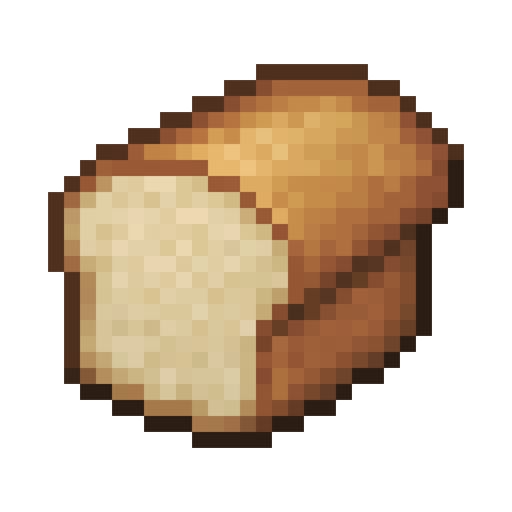sourdough bread
In the Encyclopedia of Food Microbiology, Michael Gaenzle writes: "The origins of bread-making are so ancient that everything said about them must be pure speculation. One of the oldest sourdough breads dates from 3700 BCE and was excavated in Switzerland, but the origin of sourdough fermentation likely relates to the origin of agriculture in the Fertile Crescent and Egypt several thousand years earlier", which was confirmed a few years later by archeological evidence.[3] ... "Bread production relied on the use of sourdough as a leavening agent for most of human history; the use of baker's yeast as a leavening agent dates back less than 150 years."[4]
Pliny the Elder described the sourdough method in his Natural History:[5][6]
Generally however they do not heat it up at all, but only use the dough kept over from the day before; manifestly it is natural for sourness to make the dough ferment... (Nat. His. 18:26 §104)[5]
 Sourdough remained the usual form of leavening down into the European Middle Ages[7] until being replaced by barm from the beer brewing process, and after 1871 by purpose-cultured yeast.
Sourdough remained the usual form of leavening down into the European Middle Ages[7] until being replaced by barm from the beer brewing process, and after 1871 by purpose-cultured yeast.
Bread made from 100% rye flour, popular in the northern half of Europe, is usually leavened with sourdough. Baker's yeast is not useful as a leavening agent for rye bread, as rye does not contain enough gluten. The structure of rye bread is based primarily on the starch in the flour as well as other carbohydrates known as pentosans; however, rye amylase is active at substantially higher temperatures than wheat amylase, causing the structure of the bread to disintegrate as the starches are broken down during baking. The lowered pH of a sourdough starter, therefore, inactivates the amylases when heat cannot, allowing the carbohydrates in the bread to gel and set properly.[8] In the southern part of Europe, where panettone is still made with sourdough as leavening,[7] sourdough has become less common in the 20th century; it has been replaced by the faster-growing baker's yeast, sometimes supplemented with longer fermentation rests to allow for some bacterial activity to build flavor. Sourdough fermentation has re-emerged as a major fermentation process in bread production in the past ten years although it is commonly used in conjunction with baker's yeast as leavening agent.[9]
French bakers brought sourdough techniques to Northern California during the California Gold Rush, and it remains a part of the culture of San Francisco today. (The nickname remains in "Sourdough Sam", the mascot of the San Francisco 49ers.) Sourdough has long been associated with the 1849 gold prospectors, though they were more likely to make bread with commercial yeast or baking soda.[10] The "celebrated"[11] San Francisco sourdough is a white bread characterized by a pronounced sourness, and indeed the strain of Lactobacillus in sourdough starters is named Fructilactobacillus sanfranciscensis (previously Lactobacillus sanfranciscensis),[12] alongside the sourdough yeast Kasachstania humilis (previously Candida milleri) found in the same cultures.[11]
The sourdough tradition was carried into Alaska and the Yukon territories of Canada during the Klondike Gold Rush of 1898. Conventional leavenings such as yeast and baking soda were much less reliable in the conditions faced by the prospectors. Experienced miners and other settlers frequently carried a pouch of starter either around their neck or on a belt; these were fiercely guarded to keep from freezing. However, freezing does not kill a sourdough starter; excessive heat does. Old hands came to be called "sourdoughs", a term that is still applied to any Alaskan or Klondike old-timer.[13] The significance of the nickname's association with Yukon culture was immortalized in the writings of Robert Service, particularly his collection of "Songs of a Sourdough".[citation needed]
 In English-speaking countries, where wheat-based breads predominate, sourdough is no longer the standard method for bread leavening. It was gradually replaced, first by the use of barm from beer making,[14] then, after the confirmation of germ theory by Louis Pasteur, by cultured yeasts.[15] Although sourdough bread was superseded in commercial bakeries in the 20th century, it has undergone a revival among artisan bakers and, more recently, in industrial bakeries.[9][16] In countries where there is no legal definition of sourdough bread, the dough for some products named or marketed as such is leavened using baker's yeast or chemical raising agents as well as, or instead of, a live sourdough starter culture. The Real Bread Campaign calls these products sourfaux.[17][18]
In English-speaking countries, where wheat-based breads predominate, sourdough is no longer the standard method for bread leavening. It was gradually replaced, first by the use of barm from beer making,[14] then, after the confirmation of germ theory by Louis Pasteur, by cultured yeasts.[15] Although sourdough bread was superseded in commercial bakeries in the 20th century, it has undergone a revival among artisan bakers and, more recently, in industrial bakeries.[9][16] In countries where there is no legal definition of sourdough bread, the dough for some products named or marketed as such is leavened using baker's yeast or chemical raising agents as well as, or instead of, a live sourdough starter culture. The Real Bread Campaign calls these products sourfaux.[17][18]
Manufacturers of non-sourdough breads make up for the lack of yeast and bacterial culture by introducing into their dough an artificially-made mix known as bread improver or flour improver.[19]